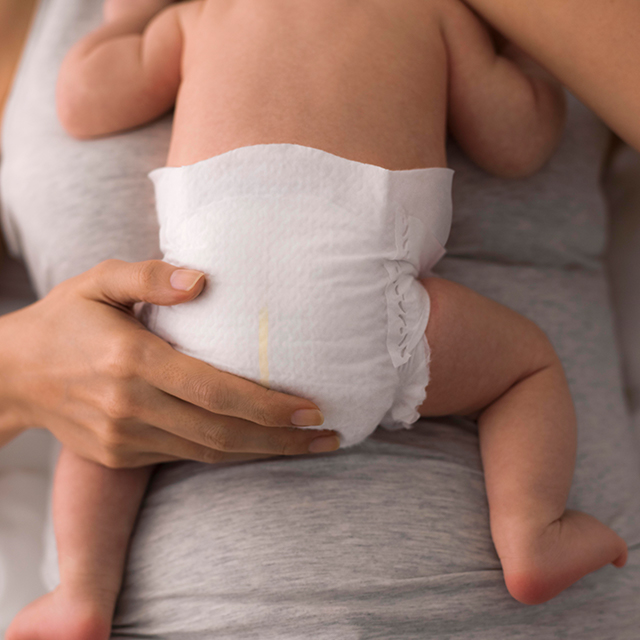Page 1 of 6

Suggested ad (Pampers)
What makes a diaper work
You want diapers to be reliable, but what does that mean, exactly? Though it might feel like magic when a diaper keeps your baby dry and comfortable for hours on end, it’s actually science.
Understanding how a diaper works will help you know what to look for when weighing your options. Here’s how modern disposable diapers do what they do.
Page 2 of 6

Moisture transfer
For instance, the blanket-like layers of Pampers Swaddlers help transfer wetness away. This includes a breathable outer cover, a unique Absorb Away Liner, and a soft, protective layer that sits against the skin.
Page 3 of 6

Super absorbency
Pamper Swaddlers are lined with “fluff pulp” fibers to help absorb liquid that then becomes a gel. This evenly distributes wetness and provides up to 12 hours of protection, which is especially useful at night.
Page 4 of 6

Wetness indicators
The pH-sensitive strip on the outside of the diaper changes color when it’s exposed to wetness. This takes the guesswork out of knowing when your baby needs a fresh diaper.
Page 5 of 6

Soft materials
Take Pamper Swaddlers, for example, a diaper with a comfy, breathable Heart Quilts Liner that’s 2X softer* against the skin. Plus, the stretchy sides flex with every move while helping the diaper stay in place.
Page 6 of 6

The diaper that does it all
Pampers Swaddlers pulls out all the stops. With moisture control, absorbency, a wetness indicator, and super-soft materials, it’s no wonder this diaper is the #1 choice of hospitals, nurses, and parents.**
Pampers is also the #1 pediatrician recommended brand, consistently providing parents and babies with the comfort, convenience, and protection they need.
This ad is brought to you by Pampers
*vs the every-day-of-the-year brand
**Hospitals: based on hospital sales data; nurses: vs. the leading competitor brands, among those with a preference; parents: based on retail sales.



